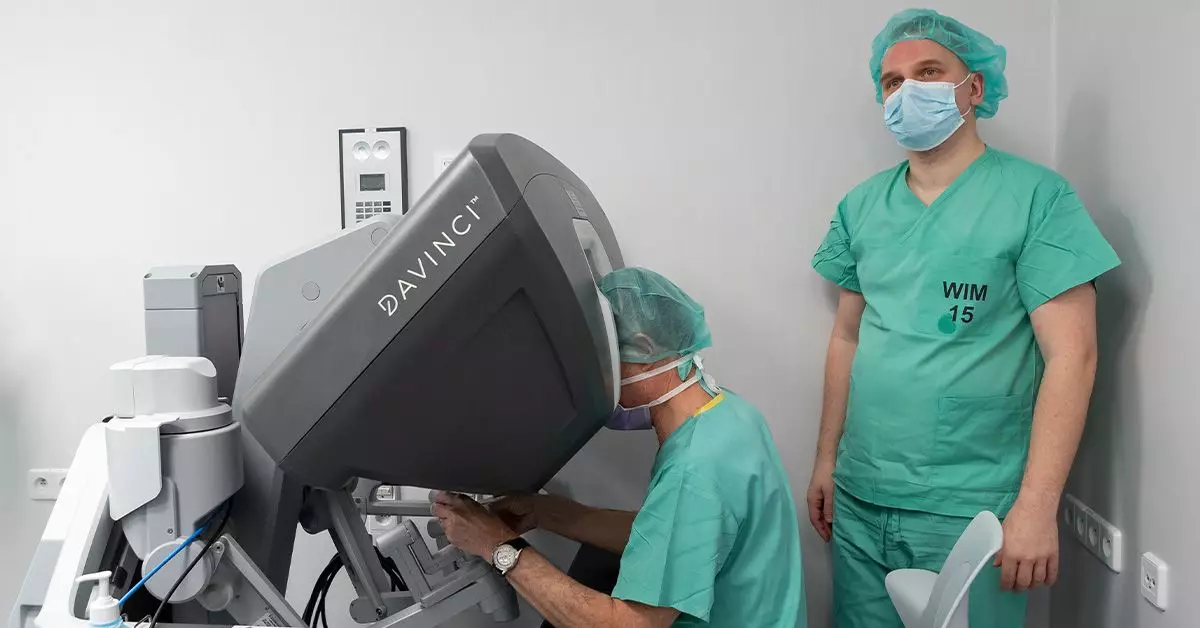Transoral robotic surgery (TORS) is revolutionizing the landscape of head and neck surgical interventions. This technique is characterized by its minimally invasive approach, which allows surgeons to operate through the mouth without external incisions. The primary tool for TORS is the Da Vinci robotics system (DVRS), which comprises multiple articulated arms that facilitate intricate surgical maneuvers within the constrained anatomy of the oral cavity. This technology not only promotes precision but also enables access to areas that are challenging to reach with traditional surgical methods.
Surgeons are trained to master the DVRS, utilizing a console to manipulate robotic arms that perform tasks with remarkable dexterity. The central arm is equipped with a high-resolution camera, providing the surgeon with a magnified view of the surgical field. This enhancement is crucial for identifying intricate structures and ensuring a higher degree of accuracy during procedures. As TORS gained FDA approval in 2009, it quickly became a viable option for treating various benign tumors and early-stage cancers of the head and neck.
Recent studies illustrate that TORS is gaining traction not only for tumors but also for thyroid surgeries and lymph node dissections. A significant 2022 investigation examined the efficacy of TORS in treating oropharyngeal cancer (OC). The study revealed that TORS offered considerable safety and effectiveness, with lower complication rates than non-robotic surgical options. Notably, TORS was more proficient at achieving complete tumor removal, demonstrating increasing success rates as surgical teams gained experience.
Performance benchmarks revealed a critical insight: surgical centers performing ten or more TORS procedures annually exhibited markedly better outcomes. This finding emphasizes the learning curve associated with robotic surgery and the importance of volume in achieving favorable results. As more institutions adapt to this technology, the sophistication surrounding TORS continues to expand, positioning it as a cornerstone in managing head and neck malignancies.
Feasibility studies endorse the dual role of TORS, not only as a treatment modality but also as a diagnostic tool for squamous cell carcinoma (SCC) of the head and neck. A 2023 small-scale study evaluated the safety and practicality of using TORS to detect primary tumors, which plays a pivotal role in forming comprehensive treatment strategies. This aligns with the overarching goal of precision oncology, where accurate tumor characterization is essential for tailoring therapies to individual patients.
Despite its advantages, TORS is not devoid of risks. The Agency for Healthcare Research and Quality (AHRQ) points out unique hazards associated with robotic systems, including the potential for human error during operation. However, the incidence of mechanical failures remains exceptionally low, occurring in only 0.1% to 0.5% of cases. Patients preparing for TORS typically undergo staging endoscopies to assess the tumor’s extent and its interaction with surrounding tissues, which is vital for the surgical planning process.
Post-surgery, patients might experience challenges, such as difficulty swallowing, which can necessitate a temporary feeding tube. However, many individuals find they can return to consuming liquids shortly after the procedure, with a gradual transition to soft foods within days. A speech and swallowing specialist may assist during recovery to optimize the patient’s ability to regain functional swallowing. The hospital stay post-TORS generally ranges from three to ten days, followed by at least six weeks off work for adequate healing.
It is also essential for patients undergoing TORS for head and neck cancers to have ongoing follow-up care. Regular monitoring for signs of recurrence within the first five years post-surgery can positively impact long-term outcomes. Patients may also need adjunct therapies such as chemotherapy or radiation, depending on the tumor’s characteristics.
As with any surgical intervention, the dialogue around TORS includes patient experiences and outcomes. The enhanced dexterity and precision afforded by robotic surgery can yield significant benefits for both patients and surgeons. Surgeons report less physical and cognitive fatigue, allowing them to maintain higher levels of focus and agility during complex procedures. Evidence suggests that TORS not only parallels but may at times surpass the success rates of traditional surgery, providing patients with a promising alternative.
The advantages inherent to TORS build a compelling narrative around its role in modern surgical oncology. Rapid recovery, reduced hospitalizations, and improved detection rates for primary tumors underscore its potential to transform patient experiences and outcomes.
TORS represents a significant advancement in the management of head and neck conditions, boasting an impressive safety profile and efficacy. While challenges remain, particularly regarding the learning curve and operational hazards, ongoing research and clinical experience continue to shape TORS into a prominent solution for patients battling tumors and other conditions in this complex anatomical region. Individuals diagnosed with head and neck conditions should consider discussing TORS with their healthcare providers as a potential treatment option.

